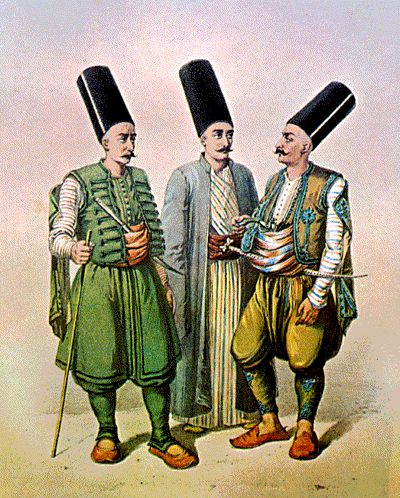
It was a corps composed of the infantry, cavalry and technical units. This corpse was commanded directly by the sultan himself.
Before the Kapikulu Corps, the Ottoman Army was composed of the infantry and "müsellem". These units were supported by cavalry, raiders, azabs, voynuks, martolos, cerahors. In the sultanate of Murad I ( 1360-1389) the organisation of the Kapikulu Corps was completed and in the 16th century, it was reorganised. In this structure there were two basic units; the infantry and the cavalry. Novice infantry, the Janissaries, the Cebecis, and the Artillery were forming the infantry. Kapikulu was among the Ottoman institutions in which the Bektashi sect (an Islamic sect) became influential. The allegorical symbols of the Bektasi sect as felt cap or cauldron were adapted into the Kapikulu Corps and the Bektasi dervishes were given membership to the corps.
 As the Ottoman borders had extended, new arrangements were made in the Kapikulu Corps. After the conquest of Istanbul an other novice Corps in Gallipoli was organised. Agha Units were added to the Kapikulu Units. The ranks and authorities of the officers were defined. For citadel protection along the borders Volunteer janissaries, cebeci, artillery, miner units were established. The soldiers were trained according to the laws of Devsirme and Penchik (Devsirme is a unit composed by recruited Christen boys trained as the Janissaries). These soldiers could not had leave the army and they were not allowed to marry. All the Kapikulu soldiers formed communities in the barracks named as "oda" (chamber) and each of these communities was divided into groups among themselves.
As the Ottoman borders had extended, new arrangements were made in the Kapikulu Corps. After the conquest of Istanbul an other novice Corps in Gallipoli was organised. Agha Units were added to the Kapikulu Units. The ranks and authorities of the officers were defined. For citadel protection along the borders Volunteer janissaries, cebeci, artillery, miner units were established. The soldiers were trained according to the laws of Devsirme and Penchik (Devsirme is a unit composed by recruited Christen boys trained as the Janissaries). These soldiers could not had leave the army and they were not allowed to marry. All the Kapikulu soldiers formed communities in the barracks named as "oda" (chamber) and each of these communities was divided into groups among themselves.Responsibilities of the Kapikulu soldiers had been defined very clearly. As a combatant corps they were strongly tied to some rigid rules. These rules were named as "Kavanini Yeniceriyan". The Kapikulus were responsible to protect the borders and security of the cities. Rifle, sword, arrow, shield, lance were the weapons, they have used.
 Traditionally the first middle of the Corps was accepted as the comrades of the sultan and on the pay days, the sultan had gone to their barracks, in the Janissary Agha uniform and he drank a cup of sherbet on his horse. The Kapikulu salaries were paid in every three months. Some Kapikulu barracks were in Atmeydani, and some were in Sehzadebasi.
Traditionally the first middle of the Corps was accepted as the comrades of the sultan and on the pay days, the sultan had gone to their barracks, in the Janissary Agha uniform and he drank a cup of sherbet on his horse. The Kapikulu salaries were paid in every three months. Some Kapikulu barracks were in Atmeydani, and some were in Sehzadebasi.The Kapikulu Corps was corrupted from the 17th century. The systems of Devsirme and Penchik lost their functions. The revolts often emerged in Istanbul were usually led by the Kapikulu soldiers. In 1632, Murad IV, restored the corps temporarily andKoprulus had brought discipline again. The reform efforts of Mustafa II, Ahmed III, Selim III were hindered by riots. Finally, in 1826, Mahmud II had abolished the Kapikulu Corps by organising and reforming the technical troops.


Hiç yorum yok:
Yorum Gönder